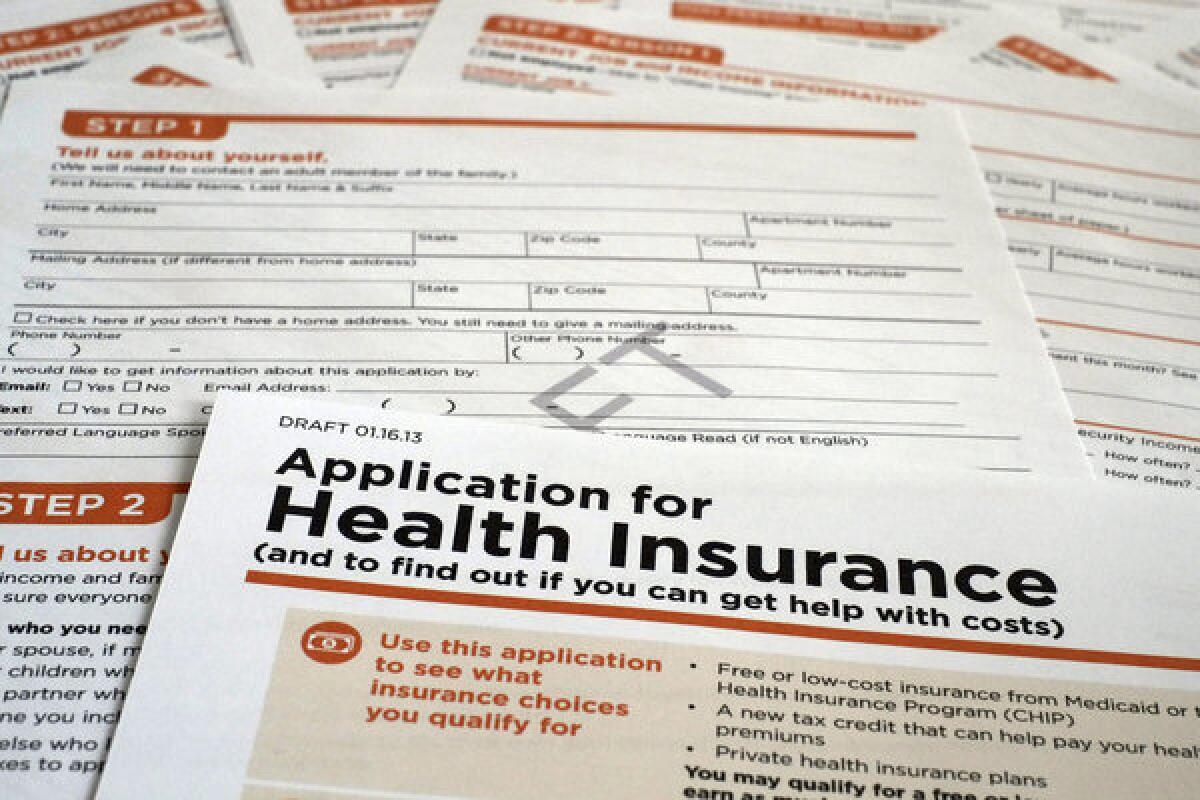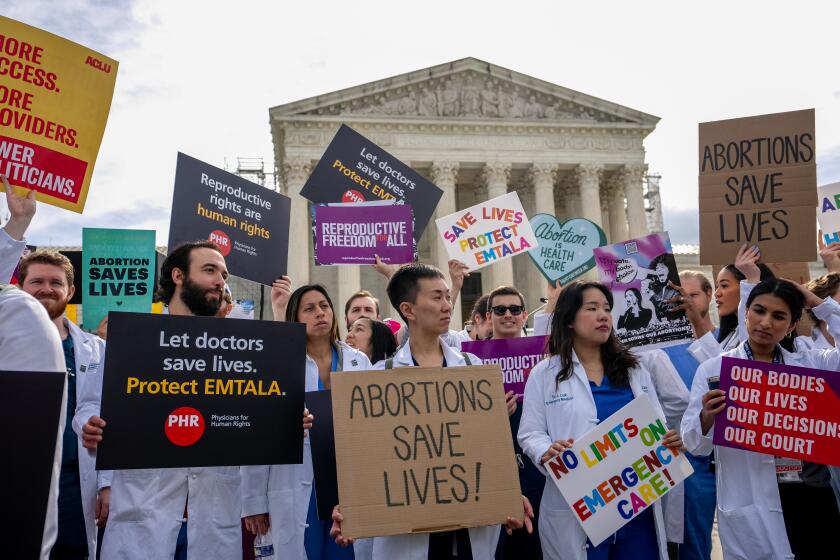3 million Californians could receive health insurance subsidies

Some Republicans still cling to the hope that they’ll be able to repeal Obamacare someday, but a report released Wednesday by Families USA shows why it may be even harder for them to do so after Jan. 1.
The report estimates that nearly 3 million Californians could be eligible for generous insurance subsidies under the 2010 healthcare reform law, starting next year. Anyone with an income between one and four times the federal poverty line -- in other words, between $23,550 and $94,200 for a family of four -- could receive a tax credit that reduces monthly premiums dramatically.
Ron Pollack, executive director of Families USA, said that about a third of those who may be eligible live in Los Angeles County. Statewide, the vast majority of these people are in families with at least one person working, Pollack said, adding that two-thirds are between the ages of 18 and 54. About half of the group is Latino, 30% white, 5% black and the rest Asian and other ethnicities. A little more than half have incomes at least twice the poverty level, which puts them in the middle or lower middle class.
The study didn’t determine how many of the 3 million Californians are covered by group health plans, which could render them ineligible for subsidies, or by Medi-Cal. Nor did it try to gauge how many have no coverage at all. So it’s wrong to assume that all of those who might be eligible for subsidies would actually receive them.
Nevertheless, the group identified by the study as potentially eligible is big and diverse enough to make considerable noise if Congress tries to take away the subsidies in future years. Other reports by Families USA show a similar percentage of eligible recipients across the country, so Californians wouldn’t be the only ones screaming.
Granted, there may be protests on the other side as well. The subsidies are expensive; according to the CBO, the gross cost of the subsidies would be about $1 trillion over 10 years. Only half of that amount would be offset by new taxes on health insurers, adult Americans who don’t carry insurance and employers that don’t offer insurance to their full-time workers, the CBO estimated.
More immediately, a recent study by actuaries at Milliman found that the new law is likely to send premiums skyrocketing for younger, healthier Californians not covered by group plans. That’s likely to cause a considerable amount of sticker shock.
On the other hand, many of those facing higher premiums would be eligible for subsidies that would leave them paying less for coverage, not more. Those under 30 could also opt for a lower-cost catastrophic health insurance plan. Beyond that, much of the projected increase in premiums stems from provisions of the law that most Americans say they like. That includes a ban on insurers denying coverage to or gouging applicants with preexisting conditions, as well as an end to lifetime coverage limits.
The subsidies will be available only to U.S. citizens and legal residents who shop for plans at Covered California, a new state insurance marketplace (or “exchange,” in the parlance of the 2010 law). Those who have access to coverage through their employer cannot receive subsidies unless the employer’s plan covers less than 60% of the risks they face or requires them to pay more than 9.5% of their income in premiums.
The amount of the subsidy will depend on the recipient’s income. Those at the poverty level would have their premiums capped at 2% of their income, while those at three to four times the poverty level would face premiums equal to 9.5% of their income. Assuming an annual premium of $15,745 -- the California average for family coverage in 2012 -- families living at the poverty line would receive more than $15,000 in subsidies, and those with four times the poverty level would receive almost $6,800.
Once that aid starts to flow, how many people would be willing to give it up without a fight?
ALSO:
Follow Jon Healey on Twitter @jcahealey
More to Read
A cure for the common opinion
Get thought-provoking perspectives with our weekly newsletter.
You may occasionally receive promotional content from the Los Angeles Times.







